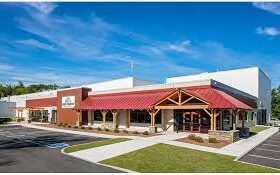In the automotive retail world, dealerships are always looking for new ways to increase profits, improve customer retention, and take more control over their business operations. One of the most powerful yet often underutilized tools to achieve these goals is a dealership reinsurance program. Positioned at the intersection of finance and insurance, reinsurance programs allow dealers to participate in the underwriting profits of the products they sell, creating an additional revenue stream while providing better service to their customers.
A dealership reinsurance program gives dealers the ability to own their own reinsurance company. Instead of sending all the profits from vehicle service contracts, GAP coverage, and other F&I (Finance and Insurance) products to a third-party insurer, a dealership can set up a reinsurance company—typically in a favorable tax jurisdiction—and retain a portion of those profits. This model turns what used to be a one-time sale into a long-term financial asset.
How It Works
Here’s a simplified breakdown of how a dealership reinsurance program operates:
- Selling F&I Products: The dealership continues to offer customers F&I products like vehicle service contracts, tire and wheel protection, and GAP insurance during the vehicle purchase process.
- Ceding Premiums: Instead of sending all premiums to a third-party insurance provider, a portion of the premium is ceded (transferred) to the dealership’s own reinsurance company. This company is usually structured as a Controlled Foreign Corporation (CFC) or a domestic entity, depending on the dealer’s needs and goals.
- Accumulating Reserves and Profits: The reinsurance company sets aside reserves to pay for future claims. Any unused reserve, minus claims and administrative costs, becomes profit for the dealer over time. These funds can grow tax-deferred, and the dealer has control over how and when to access them.
- Claims and Administration: A third-party administrator (TPA) typically handles claims processing, compliance, and paperwork, allowing the dealer to focus on running the dealership while still benefiting from the program’s profitability.
Benefits of Reinsurance Programs
- Increased Profitability: Dealers can significantly boost revenue by retaining underwriting profits that would otherwise go to an insurance provider.
- Tax Advantages: Depending on the structure of the reinsurance company, dealers may benefit from tax deferral or other favorable tax treatments, allowing the money to grow more efficiently.
- Business Asset Growth: The funds accumulated in the reinsurance company can become a valuable long-term asset that supports succession planning, retirement, or dealership expansion.
- Improved Customer Experience: Because the dealer is more involved in the claims process, they can ensure a smoother, more customer-focused experience, helping to build loyalty and repeat business.
- Greater Control: With reinsurance, dealers have more control over coverage terms, pricing, and the management of claims, providing flexibility that’s not available with traditional insurance models.
In conclusion, a dealership reinsurance program is a smart financial strategy for dealers who want to gain more control over their F&I offerings, increase profitability, and build long-term wealth. With the right setup and administrative support, it’s a powerful tool that turns everyday F&I sales into a sustainable business advantage.












